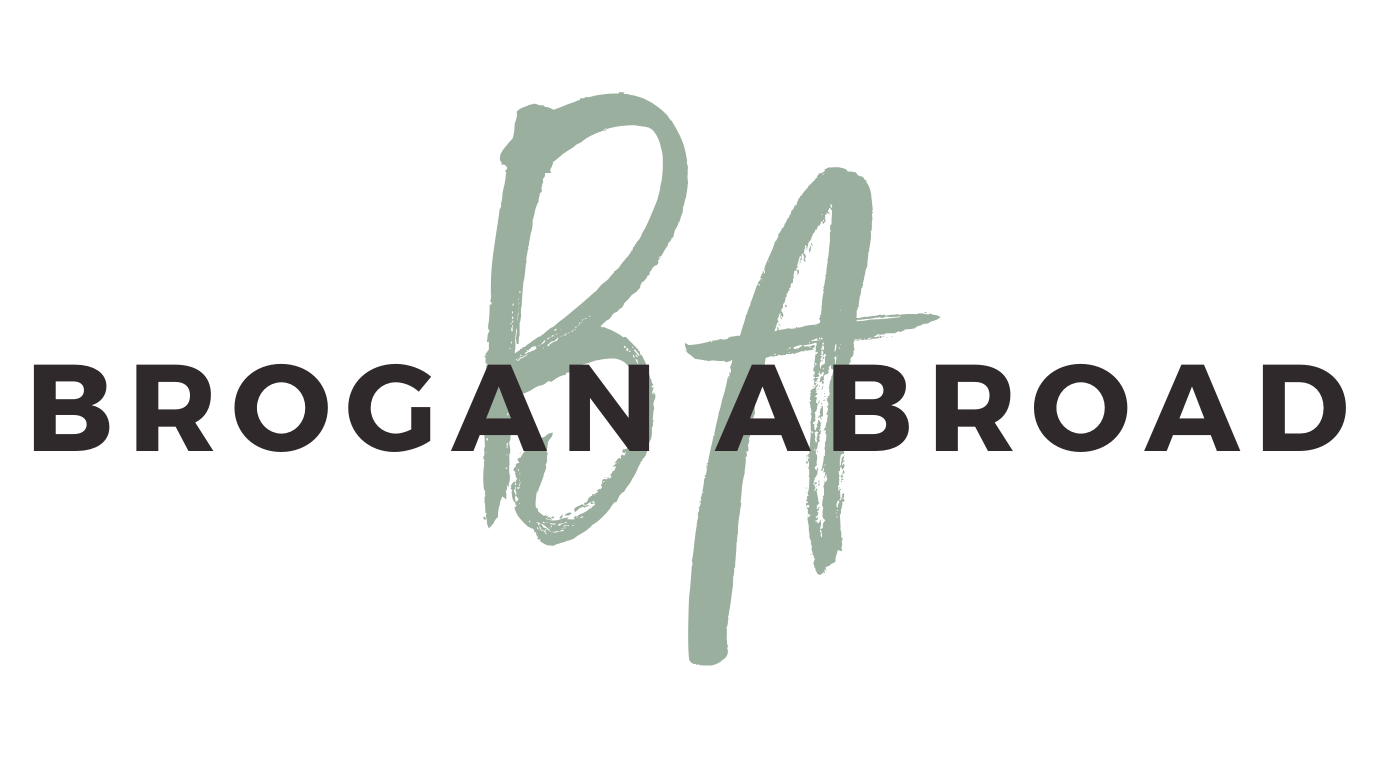Here is a 7 day itinerary to Phuket for those looking to explore the hidden gems and off the beaten track side of this wonderful island, while doing it responsibly and having a positive impact on the local community.
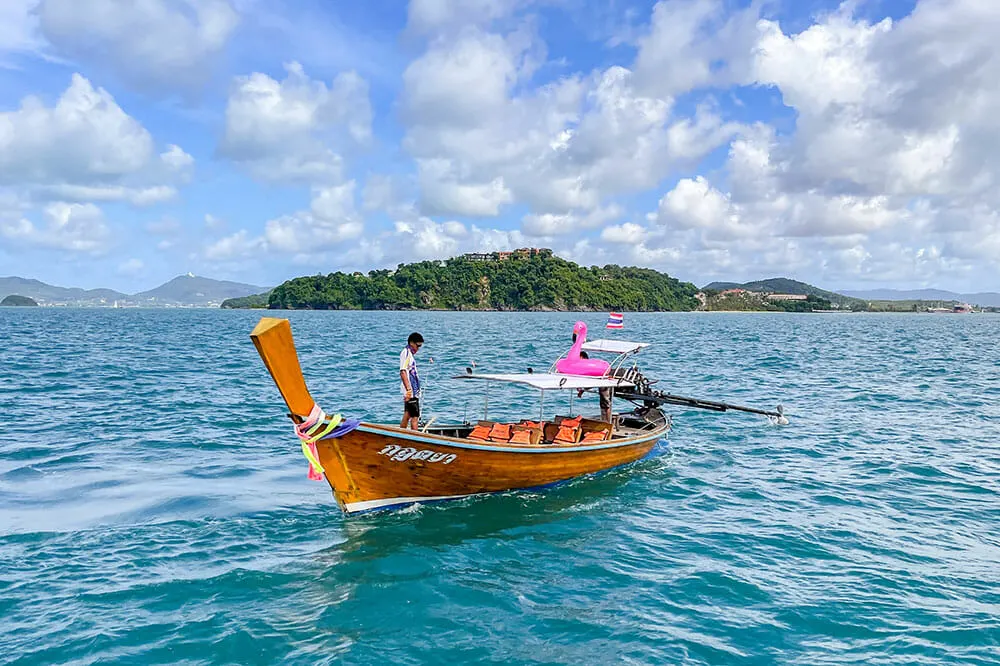
What comes to mind when you think about Phuket? Probably some of what came to mind for me before I visited – crystal clear waters, sandy beaches, and a vibrant party scene. And you wouldn’t be wrong.
However, Phuket has so much more to discover beyond its beaches and nightlife, I could put together several Phuket itineraries. From one of the most ethical elephant sanctuaries in Thailand and one of UNESCO’s Creative Cities of Gastronomy, to great community tourism initiatives and delicious organic Thai cooking classes.

I have based this 7 day itinerary to Phuket on my own experience, so here are my recommendations.
Table of Contents
- 1 Where to stay in Phuket
- 2 An easy itinerary to Phuket for responsible travellers
- 2.1 Day 1 – Phuket Elephant Sanctuary
- 2.2 Day 2 – Street food trail of Phuket Old Town
- 2.3 Day 3 – Bang Rong Village (Community-Based Tourism)
- 2.4 Day 4 – Day trip to Ko Racha Yai
- 2.5 Day 5 – Spa Retreat Day
- 2.6 Day 6 – Organic Thai cooking class at a farm
- 2.7 Day 7 – Architecture, Street Art and An Epic Sunset Spot
- 3 Best time to visit Phuket
- 4 How to get around Phuket
- 5 How to get to Phuket
- 6 Travel Tips for this itinerary to Phuket
- 7 Phuket FAQs
- 8 Planning your itinerary to Phuket
Where to stay in Phuket
There are plenty of accommodation choices in Phuket for all budgets, depending on whether you are looking for peace and quiet or looking to be in the thick of it all.
I stayed at Anantara Mai Khao Phuket, in the north of the island, by Mai Khao Beach, a long stretch of golden sand fringed by lush palm trees. The resort consists of 83 stunning pool villas clustered around a lagoon.

Not only is Anantara Mai Khao Phuket a gorgeous resort, but it also has a number of sustainability awards for their conservation work in partnership with the Mai Khao Marine Turtle Foundation, and their social responsibility program working closely with the local communities.
Book Anantara Mai Khao Phuket here
For more budget friendly options, check out more places to stay in Phuket here.
An easy itinerary to Phuket for responsible travellers
Famous for its beautiful beaches, Phuket is the largest island in Thailand. However, 70% of it is covered in mountains. The name Phuket comes from the Malay word Bukit, which means mountain or hill.
Away from the tourist hot spots, you can find the real Phuket that a lot of visitors don’t get to see.
Not only that, but you will be discovering the lesser known side of Phuket while supporting sustainable initiatives that include wildlife welfare programs, community tourism schemes, as well as supporting local businesses and enjoying the best of the island’s local produce. Read more about what responsible tourism means.
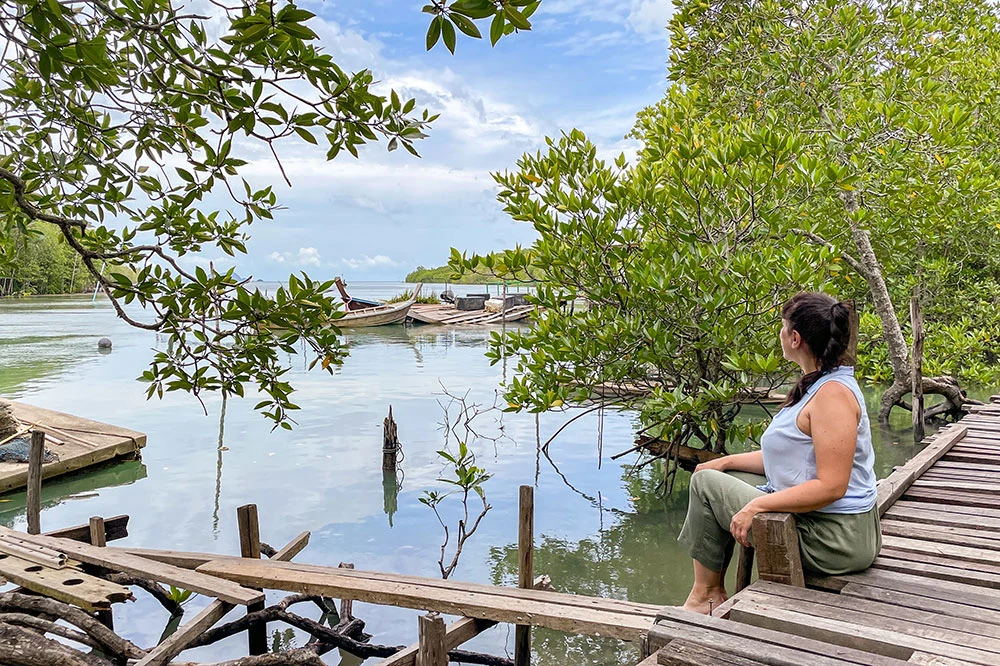
In this 7 day itinerary to Phuket I am highlighting one key sustainable place to visit and one place to eat for each day, in order to help you build some time to relax and enjoy this lush and gorgeous island without rushing. Slow travel is definitely the best way to enjoy Phuket.
Read on to discover some truly amazing hidden gems in this fascinating island.
Day 1 – Phuket Elephant Sanctuary
Phuket Elephant Sanctuary (PSE) is the first and most ethical elephant sanctuary in Phuket. With 12 elephants in its care, PSE focuses on rescuing older elephants that can no longer work in the logging industry and whose owners no longer have a function for them.
Montri Todtane, the founder of PSE, is a former owner of an elephant riding camp, who realised that the elephants were working too hard.

After learning about Chiang Mai’s Elephant Nature Park (ENP), one of the most ethical animal sanctuaries in the world according to National Geographic, together with Libearty Bear Sanctuary, Montri was inspired to start his own ethical sanctuary.
PSE has 12 mostly female elephants that can roam freely in a 30-acre ‘retirement home’ and be looked after in the last years of their lives.
You can observe the elephants at a safe distance from the new 600-metre long canopy walkway built to provide the elephants with maximum freedom to roam.

One of the things that I was really happy to see is that there is no bathing or any sort of interaction between visitor and elephant, allowing the animals to be themselves and behave as naturally as they would in the wild.
Book your half day to Phuket Elephant Sanctuary here
Phuket has a number of elephant sanctuaries that are not true sanctuaries, but rather they use elephants as a tourist attraction. The interest of these ‘sanctuaries’ does not lie with the welfare of the elephants, so I would like to urge you to avoid these pseudo-sanctuaries, as well as other visitor attractions that use animals for human entertainment.
Please ensure that you visit a truly ethical sanctuary like Phuket Elephant Sanctuary and not one of the many similarly named elephant camps in Phuket.
Where to eat – Tunk-Ka Cafe Phuket Hilltop Restaurant
Tunk-Ka Cafe is one of the most famous restaurants in Phuket. It’s been open since 1973 and it’s a bit of an institution.

Located on the hilltop of Khao Rang, right next to the viewpoint, it has an impressive view over Phuket Town, Cape Panwa and Chalong, particularly at night. Arrive before sunset to secure a table on the balcony terrace.
But the real highlight at Tunk-ka Cafe is the food, which includes a wide range of Thai dishes and of course, local Phuket specialties. Delicious yet affordable, you can’t go wrong with whatever you order.

I particularly recommend tod mun goong (deep fried shrimp cakes) and tom kha goong (hot and sour coconut soup with seafood).
Day 2 – Street food trail of Phuket Old Town
One of the best ways to get to know a destination is through its food, and in particular through its street food. So what better way to explore Phuket Old Town than through a street food trail?
Phuket is a UNESCO Creative City of Gastronomy, renowned for its rich culinary heritage and mouth watering street food.
It is a culturally diverse city, where the influences of multiple cultures such as Malay, Chinese and Southern Thai have resulted in what is known as Peranakan food.
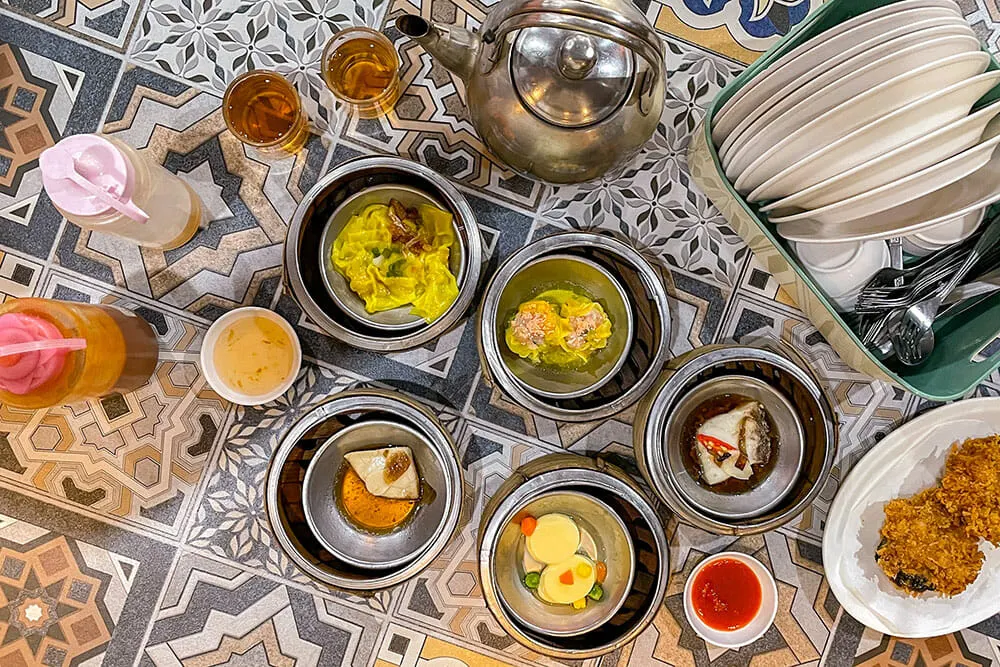
Start the day with Phuket-style dim sum breakfast at Ratcharot Dim Sum, where you order small portions of dim sum and they get steamed for you on the spot.
Walk into the Old Town, where you can try butterfly pea sticky rice with custard, fresh pork spring rolls, and the famous hokkien mee (hokkien noodles).
For dessert, don’t miss trying o-aew, a local specialty that consists of shaved ice served over jelly and drizzled with syrup. It’s incredibly refreshing. Another local dessert to try is khanom ahpong, a thin crispy coconut pancake.
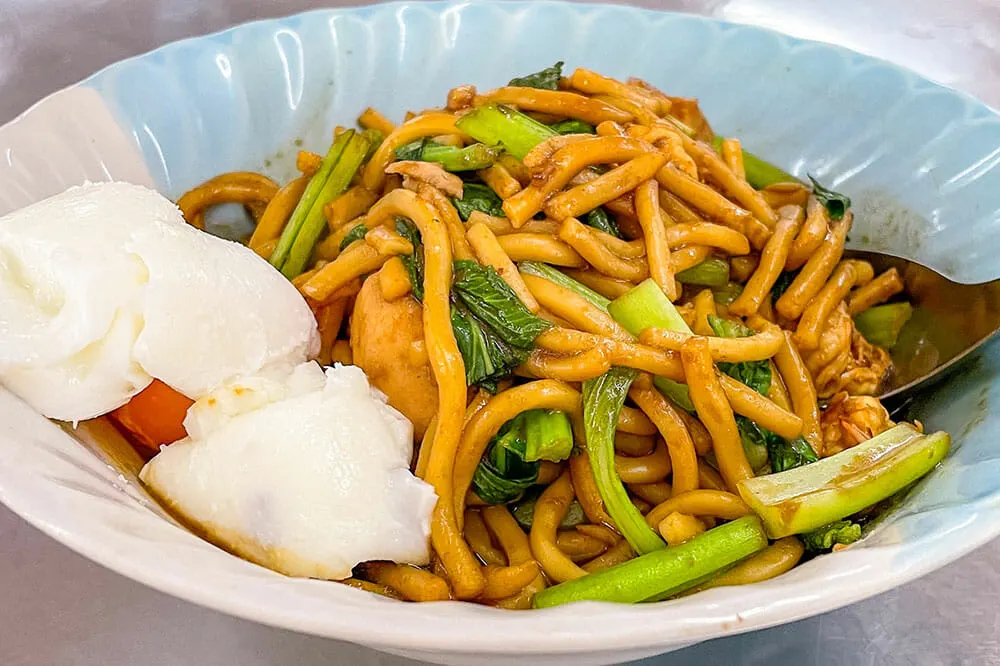
If you are looking for something a bit more experimental, why not try tom yum ice cream at Thaivetro.
The best way to enjoy a street food tour in Phuket Old Town is by joining a tour that can take you to the best places to try the most iconic Phuket dishes. Here are a couple of food tours you could join:
After you’ve eaten your way through Phuket Old Town you probably won’t want to eat any more, so I’m skipping today’s recommendations for where to have dinner.
Day 3 – Bang Rong Village (Community-Based Tourism)
Bang Rong is a small Muslim community located in the north-east of Phuket with a history that goest back more than 200 years. Surrounded by mangrove forest, Bang Rong has created a conservation program that you can visit to learn about the way this small community lives.
This program allows visitors to get involved in community-based tourism that, in turn, allows local people to continue to maintain their traditional way of life.
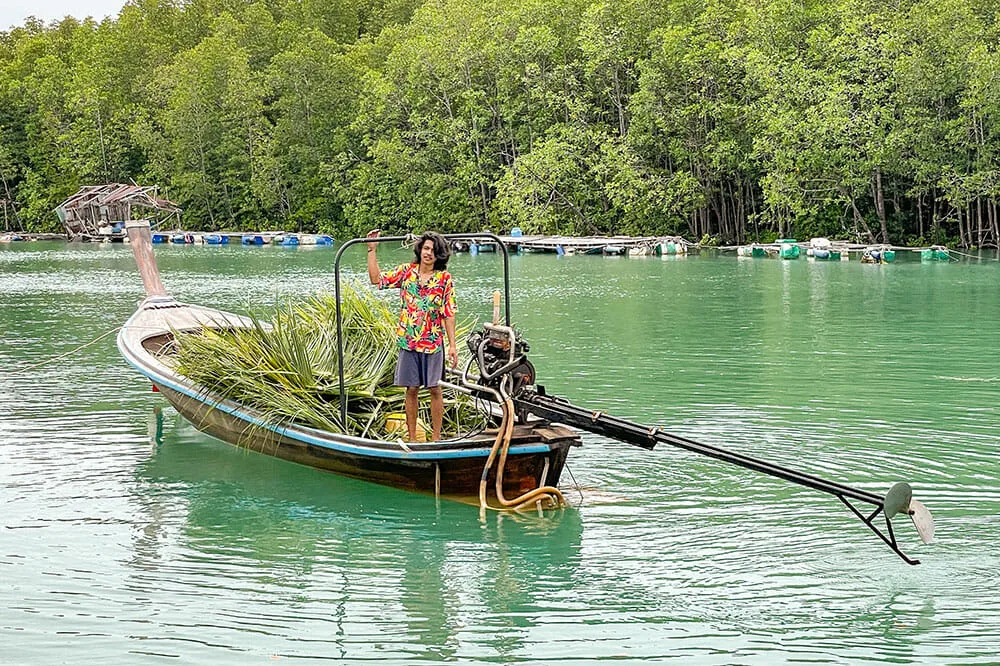
By visiting Ban Rong, you support a way of life that is in danger of disappearing, and you get to learn and experience agricultural and fishing life in Phuket.
Activities include a visit to a pineapple plantation, where you will try the sweetest pineapple you’ve ever eaten straight from the plant, and a visit to a rubber plantation where you learn about the process of harvesting rubber.

There is also a visit to a coconut plantation, where you get to try freshly picked coconut and you learn about the different by-products of the coconut.
Last but not least, you will be taken on a boat tour out to sea from the mangroves, to release female crabs carrying eggs onto the seagrass, in order to hatch and give them a better chance of survival.
The boat trip includes a visit to Koh Phae, a true desert island and real hidden gem in Phuket. It is a small rocky island with a long sandbar that is visible and accessible only at low tide.

To book a day out in Bang Rong Village, you can message them directly on their Facebook Page.
Where to eat – Kan Eang @ Pier Restaurant
A trendy seafood restaurant, Kan Eang @ Pier Restaurant is located along the banks of Chalong Bay, in South Phuket, and has fantastic views over the marina.
A family run restaurant, it has gained a reputation for being one of the top seafood restaurants in Phuket.

The menu includes traditional Thai dishes from all over the country as well as local Phuket specialties. I highly recommend the Phuket lobster, a 7-colour lobster, in sashimi form – delicious and served with a bit of drama!
Day 4 – Day trip to Ko Racha Yai
The best way to do a day trip to Ko Racha Yai, or spend a day island hopping, is by hiring a private catamaran with a crew.
This may sound a bit extravagant, but if you are travelling with a group of friends, it can be surprisingly affordable for such an amazing experience.

I went on a day trip with Tiger Marine Charter to Ko Racha Yai, a paradisiac island about 20kms south of Phuket. We departed from Boat Lagoon and it took a couple of hours to get to the island.
The catamaran had everything you needed for a fun day out at sea. From snorkelling equipment, kayaks and SUP boards, to a floating jacuzzi and an inflatable slide. There was something for everyone. We even had an iAQUA Stingray, a sea scooter for underwater exploration.

On the way back to Phuket we went via Mai Thon Island, a privately owned island where there is a permanent pod of dolphins. We sadly weren’t lucky that day and didn’t see any dolphins, but it was fun to look out for them.
The day trip included an incredible spread of food freshly prepared for us onboard, including delicious steamed blue crab.
Book the same chartered catamaran I went on here
Alternatively, if you are travelling solo or your group is not big enough to charter a private catamaran, you can join a tour for a day trip to both Ko Racha Yai and Ko He (Coral Island).
Where to eat – One Chun Restaurant
The food in Phuket was incredibly good everywhere I went, but my favourite restaurant was One Chun, in Phuket Town.
Housed in a 19th century building, the designer vintage feel of One Chun is the first thing that will catch your eye. Decorated with antiques and traditional painted tiles, it has a very welcoming atmosphere.

But the food is really something else. Using family recipes passed down from three generations, one of its signature dishes include keang poo (southern style yellow crab curry) with rice vermicelli.
Other traditional Phuket dishes not to miss out on are moo hong (southern Thai stewed pork belly) and nam prik kung seab (spicy dry shrimp dip).
Day 5 – Spa Retreat Day
Exploring and discovering new experiences can be hard work, so why not spend a day relaxing and treating yourself at a literal oasis?
Oasis Spa is a Tropical Retreat Spa located within the Laguna Resort at Bangtao Beach. Nestled among white sand beaches and peaceful lagoons, this elegant sanctuary lives true to its name.

After a very refreshing welcome drink, I was led to a spacious treatment villa with an outdoor shower and bath, where I got ready for a 2.5 hour personalised treatment.
The treatment included an organic coconut full body scrub, a coconut oil full body massage, and a facial treatment and massage that left me feeling like a new person.

The treatment was fully tailored to me, where I was able to choose how gentle or how deep the body massage was. And it was exactly what I needed!
After the treatment I was presented with a lovely cup of jasmine tea and a sample of my favourite Thai dessert – mango and sticky rice.
Book your own Oasis Spa treatment here
Where to eat – Age Restaurant at Anantara Layan Phuket Resort
Age Restaurant is a real treat, with a menu by the winner of Thailand’s Iron Chef and a wine cellar any sommelier would dream of.

The specially prepared menu included octopus and chickpea tartlet, parsnip cooked three ways (my favourite dish of the night), dry aged sea bass and an amazing red velvet bombe Alaska. All of it cooked with ingredients produced locally.
Day 6 – Organic Thai cooking class at a farm
No itinerary to Thailand is complete without a Thai cooking class, and if you can make it organic, even better.
I visited Old Phuket Farm, a working farm and education centre where you can learn about traditional farming methods of used in the old times in Phuket. Part of my visit was a cooking class, using some of the ingredients grown in the farm.
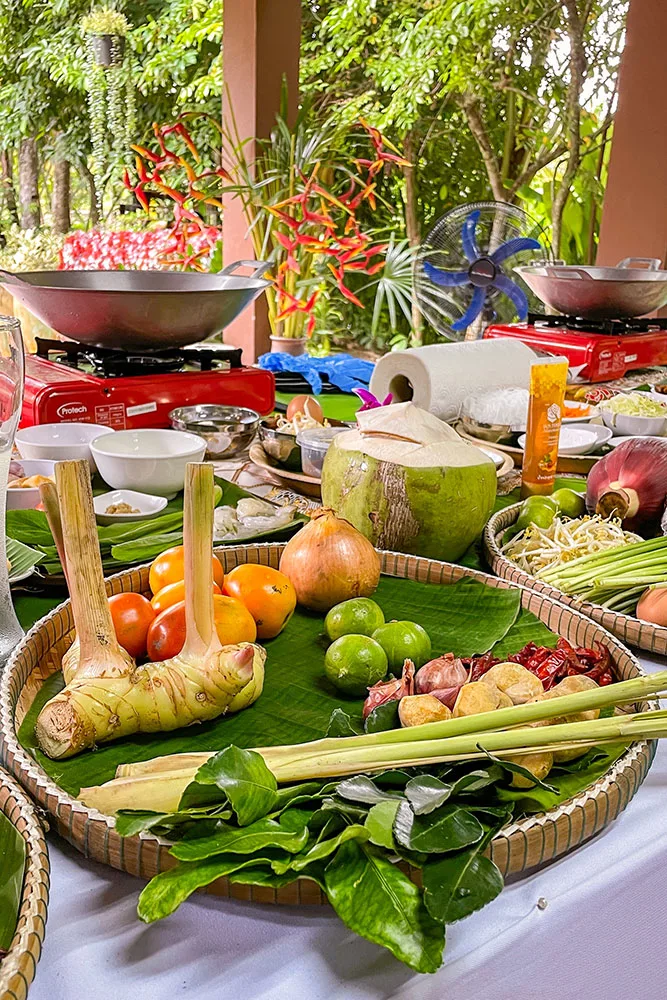
I love cooking, although it doesn’t necessarily mean I’m good at it, but I love eating even more. So I was very excited to try my very own Thai creations.
I was taught how to cook five different Thai dishes: Tom Yum Kung (hot and sour prawn soup), prawn pad thai, panang chicken curry, vegetable spring rolls and, for dessert, banana fritters.
As I said, I’m no masterchef, but every single dish I cooked turned out to be delicious! Of course, I had a little bit of help from the amazing chef that ran the class and her assistants. But I was still really proud of what I cooked. I even made it look good!

And after a day cooking and eating, I’m sure you won’t be needing dinner, so I’m skipping today’s recommendation for where to eat.
Day 7 – Architecture, Street Art and An Epic Sunset Spot
I was pleasantly surprised about how much Phuket Town had to offer and by how beautiful it is, and I feel it deserves a second visit.
Phuket Old Town has been heavily influenced by other cultures such as Malay, Chinese and Indian, and this can be reflected in the local architecture. As you walk around the city, you will come across shophouses of Sino-Portuguese style.

One street where you can see a great concentration of this gorgeous and colourful style is Soi Romanee. It reminded me a lot of the shophouses in Penang, Malaysia.
Thalang Road is a busy hub with great shops and where the weekly Sunday Walking Street Market takes place.
Don’t miss a visit to Phang Nha Road, where you can visit the Shrine of The Serene Light, a small Hokkien shrine founded in 1891, and the famous On On Hotel, where the scene where Richard meets Duffy on ‘The Beach’ was filmed.

While you wander the streets of Phuket Old Town, you will come across a lot of street art, including works by Alex Face, Phuket’s street artist famous for its three-eyed characters. This includes Red Turtle Cake, which symbolises a long and prosperous life.
To finish off the day, head further south of the island to Cape Panwa, more specifically to Baba Nest at Sri Panwa.
Baba Nest is a spectacular rooftop bar that has been named one of the best rooftop bars in the world by Conde Nast Traveler.

With its wrap-around infinity pool, it feels like you’re in the middle of the ocean overlooking 360 degrees views of Phuket’s southeastern peninsula, the Andaman Sea, and the surrounding islands.
Grab a cushion, make yourself comfortable with a cocktail, and prepare yourself for an epic sunset you won’t forget in a hurry.
Where to eat – Raya Restaurant
Raya is easily Phuket’s most famous restaurant and a Michelin guide restaurant. It serves original Phuket style dishes and is popular with both locals and tourists.
Raya is housed within a Sino-Portuguese shophouse that is beautifully preserved, but to see the original features, you need to go right to the back of the restaurant.

The food was truly spectacular, with my favourite dishes being the chicken massaman curry, deep fried fish with lemongrass and tamarind sauce, the crab meat with curry and coconut milk served with vermicelli noodles, and the shrimp cakes.
Best time to visit Phuket
Phuket is warm throughout the year, with average temperatures between 22C and 34C. However if you are looking for beach weather, the best time of the year to visit Phuket is during the dry season, from December to March.
December and January are the driest and sunniest months, but this also means that they are the busiest and it’s the most expensive time to visit.
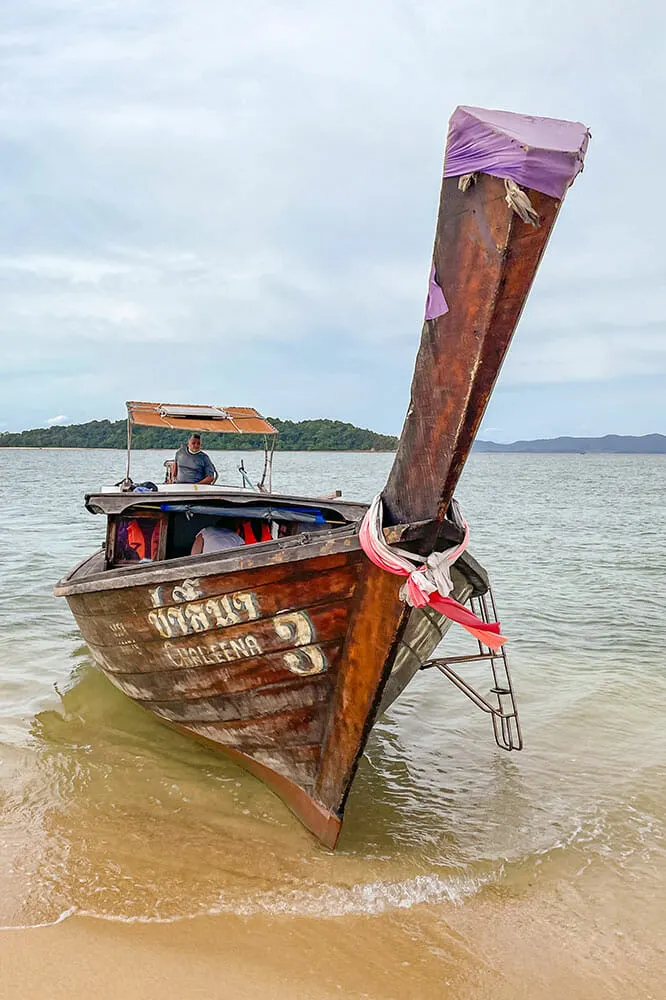
The rainy season in Phuket is from mid-May to October. This is a better time to visit if you are looking for the best deals and to avoid the crowds. However, you will often get heavy rain and the seas are too rough for swimming.
But don’t let this put you off from visiting Phuket during the rainy season. I visited in July and the days were hot with temperatures around 30C, with a combination of sunny and overcast. I actually only got one hour of rain during my 7 days in Phuket.
How to get around Phuket
One of the easiest ways to get around Phuket is by tuk-tuk. Tuk-tuks are great for short distances and, in my opinion, it’s the most fun way to get from A to B. Just make sure that the driver knows the destination and you agree on the price before jumping on one.
If you are travelling on your own or if you are a couple, hiring a scooter is a great way to move around the island. You get the flexibility and freedom to explore in your own time and at your own pace and you’ll get a real sense of adventure.

There are, however, many scams related to scooter hire, so I would recommend hiring one through your hotel if possible. Another thing to note is that traffic rules are completely ignored in Phuket, so make sure you have adequate travel insurance to avoid any horror stories.
Taxis are another option for getting around Phuket. They are reasonably priced and taxi drivers (if you find one that speaks English) can give you some local insights and tips. Again, agree your fare in advance.
Alternatively, use Grab Superapp to order a ride and you’ll know exactly what you’ll be paying beforehand.
How to get to Phuket
Many airlines fly to Phuket from the UK and the US, but I travelled with Singapore Airlines via Singapore. The transit at Singapore Changi Airport was really easy, with people directing you to the right area for your connecting flight as soon as you disembark the aircraft.

Singapore Changi Airport is one of the most exciting airports in the world to visit, with a lot of things to do and visitor attractions to keep you entertained in between flights.
Travel Tips for this itinerary to Phuket
The ‘real’ Phuket: If you’d like to experience the real Phuket, stay away from overdeveloped areas like Patong. It’s an area that needs to be experienced, but I’d recommend basing yourself somewhere else in the island and visit instead.
Tap water: Tap water is not drinkable anywhere in Thailand, and Phuket is no exception. If you want to avoid buying water, use a reusable bottle with a purifier like Grayl (it’s good for the environment too!)
Visiting temples: Thailand, including Phuket, is a devout Buddhist country, so please respect local customs by dressing appropriately when visiting temples. Ensure you cover your shoulders and knees, and take your shoes off before entering a temple.

Mosquitos: They are everywhere. No matter where you go or where you stay, you will find these little nuisances. Don’t forget to pack an effective insect repellent.
Driving: They drive on the left, but traffic rules are not always respected, so ensure you keep all your wits about you when driving.
Staying Connected: Get a SIM card when you arrive in Phuket. There are deals for tourists where you can get a SIM card with unlimited data to last the length of your stay. The easiest way to buy them is to go to a phone shop (I used the dtac network shop).
Phuket FAQs
Phuket has so much to offer, I’d say a minimum would be 5 days to get a good feel for the island. But you could easily spend 7 days in Phuket and even 14 days without feeling like you are running out of things to do.
Not at all. This Phuket itinerary is based on 7 days, and I have to admit that I wish I had longer to spend on the island, as there were areas that I left unexplored. It just depends on what you’d like to see and do.
As mentioned, it depends on how deeply you’d like to get to know Phuket. There is certainly enough to keep you from getting bored on the island, so it’s very unlikely that you will ‘run out’ of things to do.
The only things you should avoid in Phuket apply to the whole of Thailand. Things like walking bare-chested in the street, disrespecting the Thai Royal family and visiting temples and not covering up shoulders and knees should be avoided. These are just a few examples, so make sure you learn about the do’s and don’ts of visiting Thailand.
There are a few things that are against the law across Thailand, including Phuket. Disrespecting the Thai Royal family, consuming and possessing drugs, and overstaying your visa are a few of them. Specific to Phuket, smoking in popular beaches such as Patong is banned.
The best area to stay in Phuket will depend on what you are looking to do during your time on the island. If you are looking for a quiet beach area, Mai Khao is set within a protected national park, so it’s more tranquil and less developed. If you are looking to do a lot of sightseeing, Phuket Town is a great base. But if you are looking to be in the middle of the hustle and bustle and the famous (or infamous?) Phuket nightlife, Patong may be for you.
Planning your itinerary to Phuket
- Plan your trip to Phuket with these guidebooks.
- Get the best flight deals with Skyscanner or Kiwi.com.
- Find the perfect place to stay in Phuket on Booking.com.
- Prefer living like a local? Why not stay in an apartment?
- Discover more about Phuket through guided tours.
- And last, but not least, don’t leave home without travel insurance!
Do you have any questions about this Phuket 7 day itinerary for responsible travellers?
Let me know in the comments!
LIKE THIS POST? PIN AND SAVE FOR LATER


Disclosure: This post has been created as a partnership with the Tourism Authority of Thailand (TAT). As always, all views are my own.
